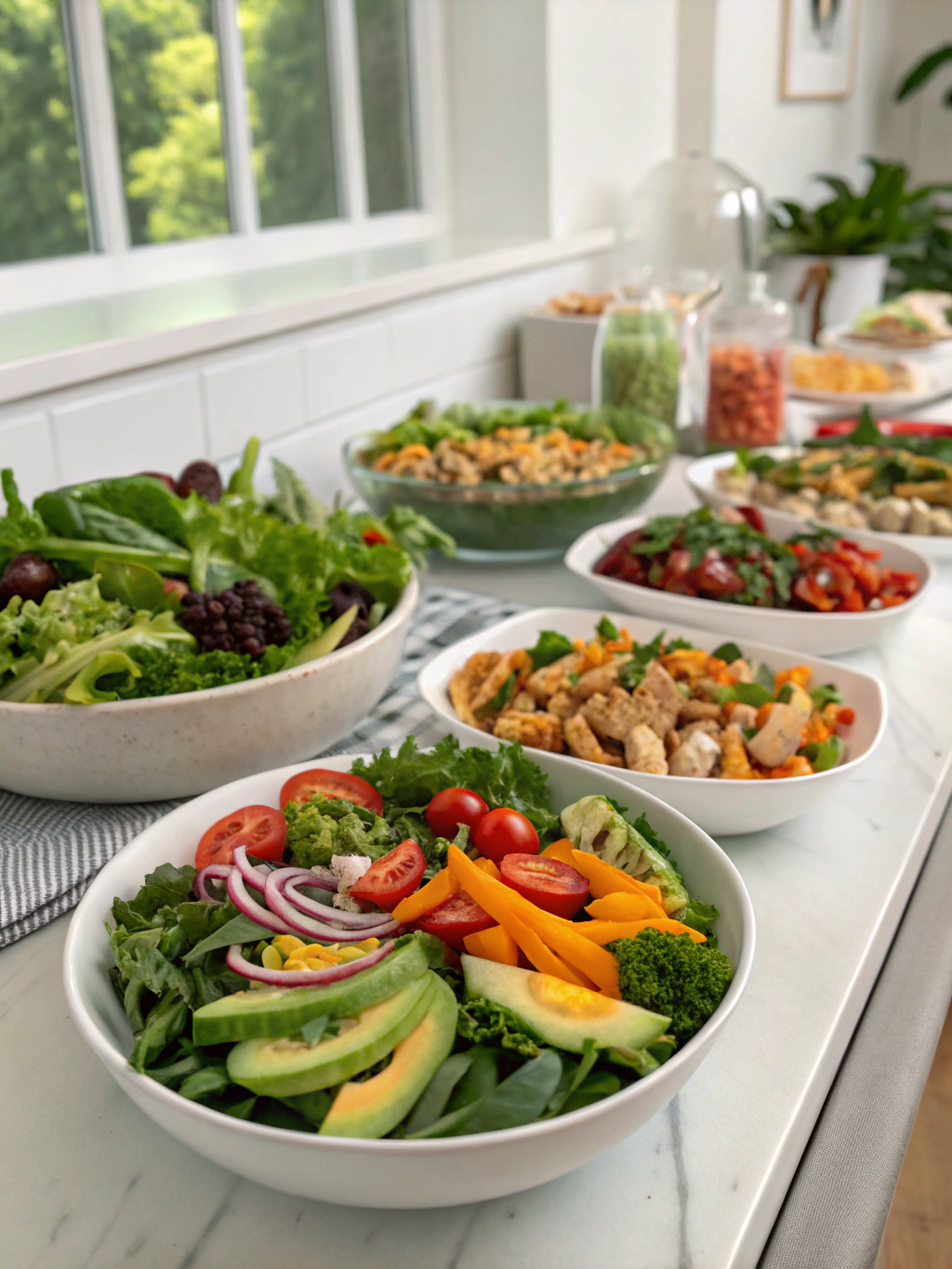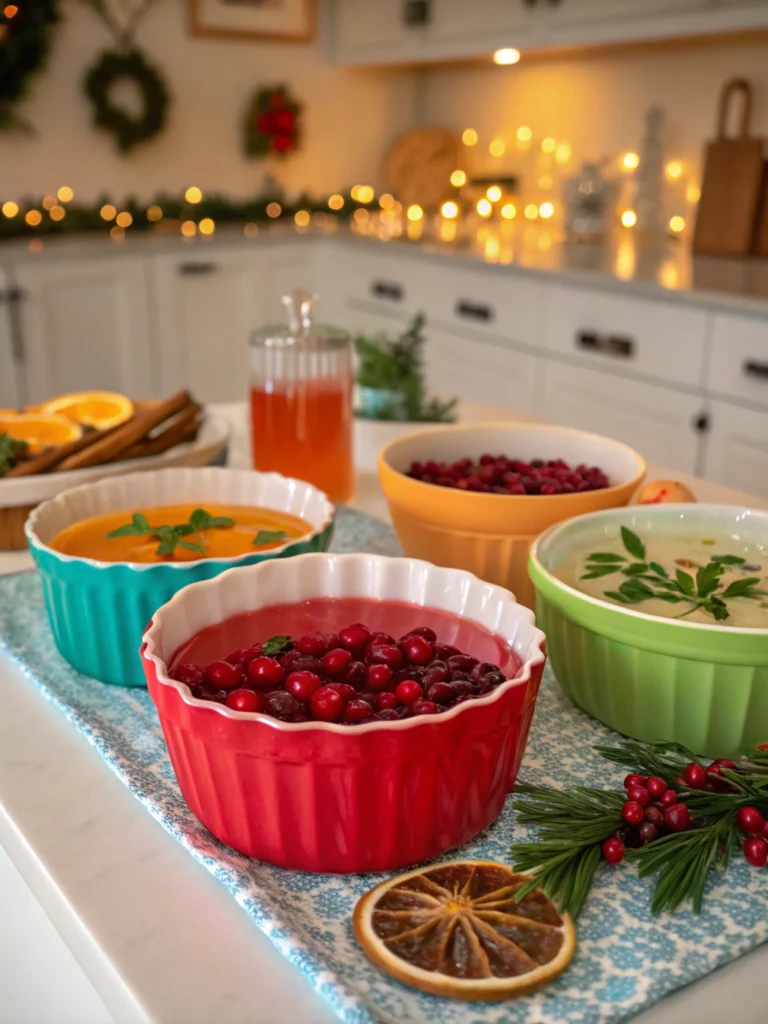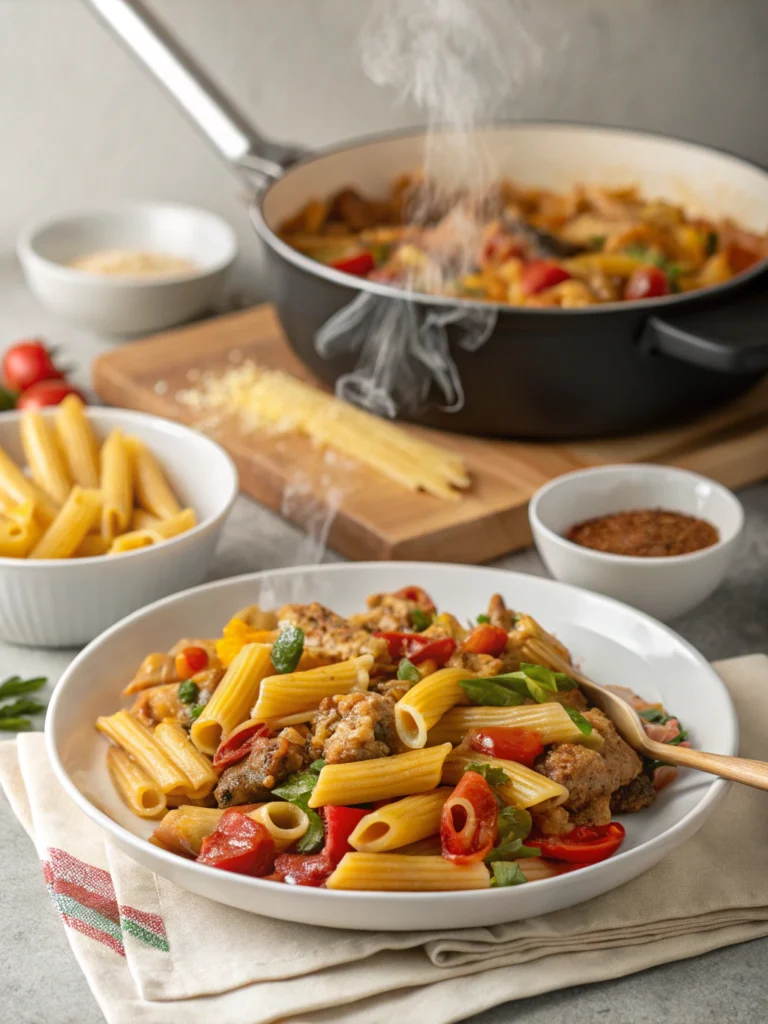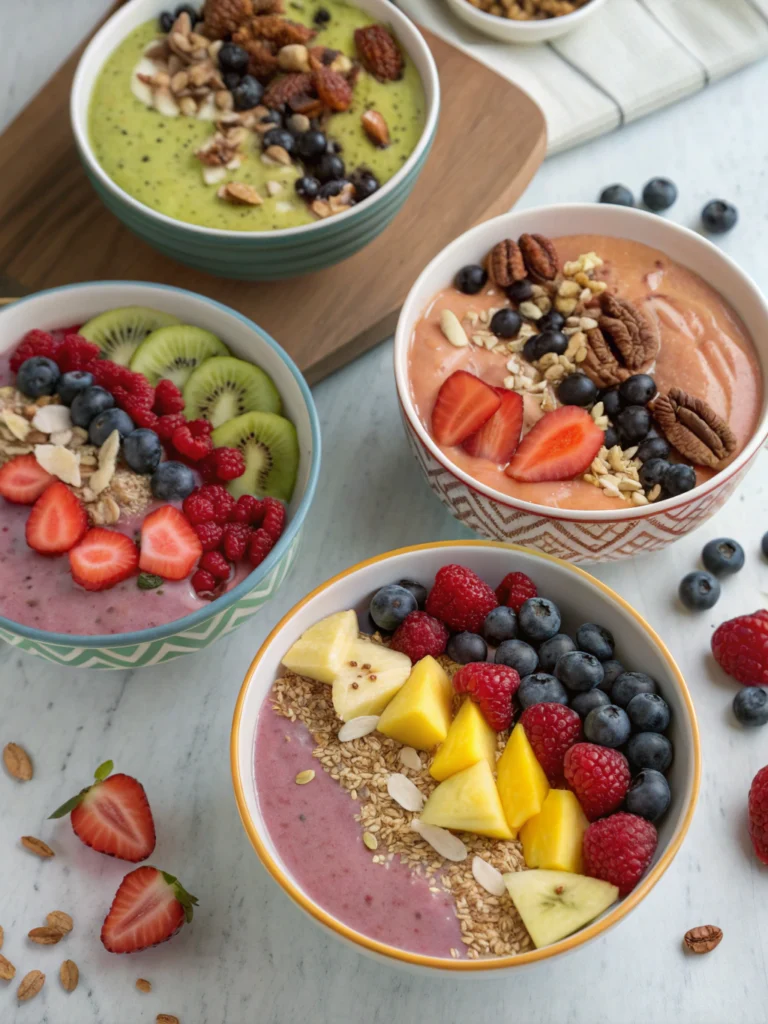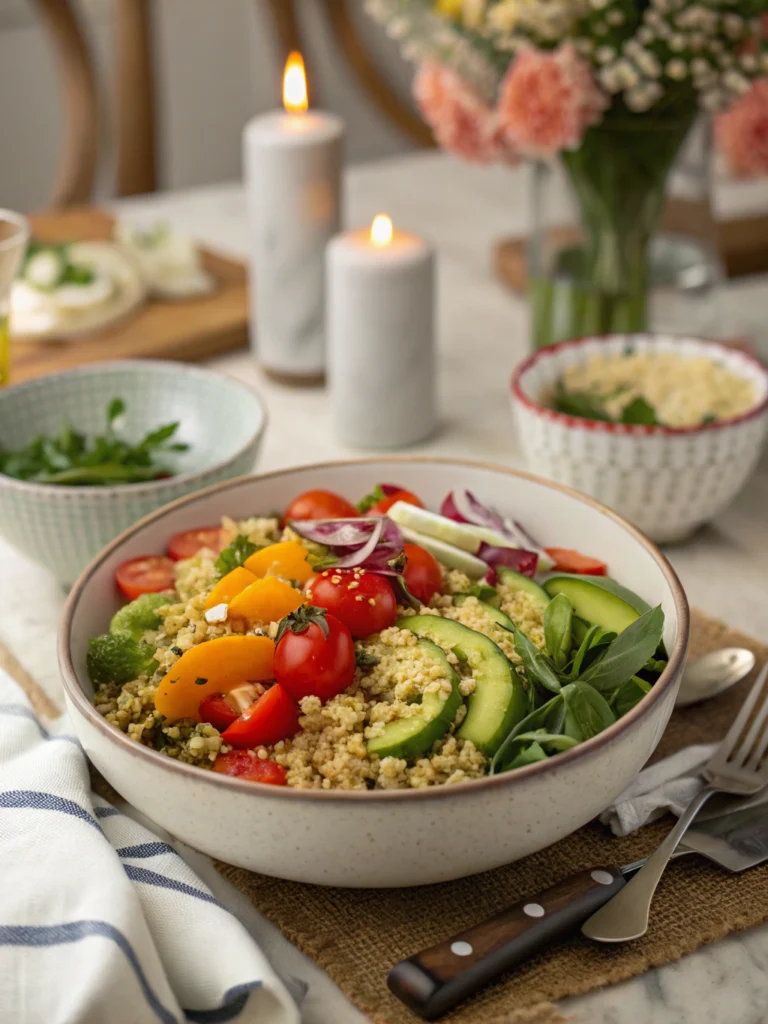low-calorie salad recipes : 8 Light and Refreshing Dishes to Enjoy
Table of Contents
Introduction
Did you know that incorporating more salads into your diet can not only help with weight management but also provide a wealth of essential nutrients? With the right combination of fresh vegetables, lean proteins, and flavorful dressings, you can create delicious low-calorie salad recipes that are both satisfying and good for you. In this comprehensive guide, we’ll explore eight light and refreshing salad dishes that are sure to delight your taste buds while keeping your calorie intake in check.
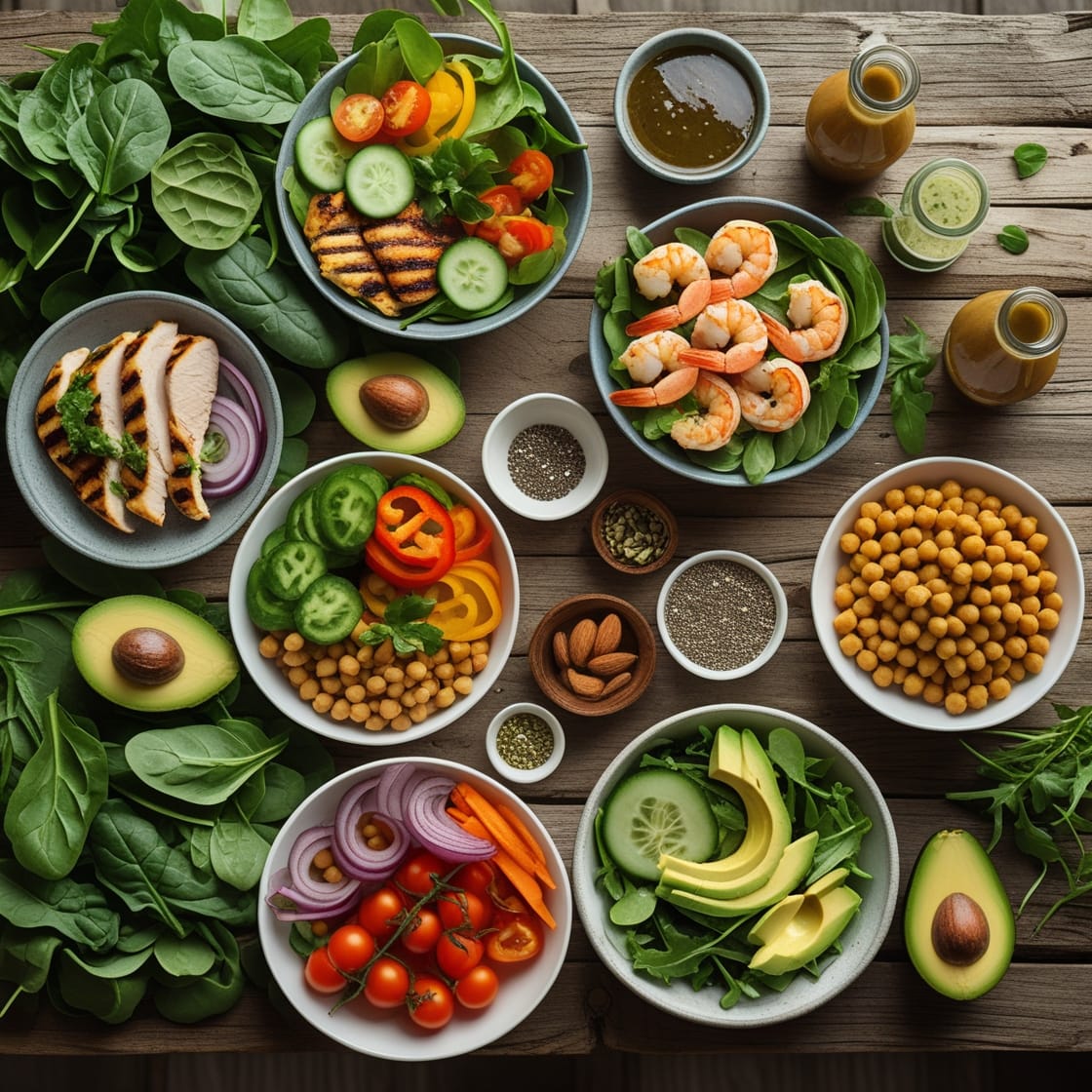
Ingredients List
Crafting the perfect low-calorie salad starts with selecting the right ingredients. Here’s a list of the key components you’ll need, along with some suggested substitutions:
- Greens : Spinach, kale, mixed greens, arugula
- Vegetables : Tomatoes, cucumbers, bell peppers, carrots, onions
- Proteins : Grilled chicken, roasted shrimp, hard-boiled eggs, chickpeas
- Healthy Fats : Avocado, nuts, seeds
- Dressings : Balsamic vinaigrette, lemon-herb vinaigrette, tzatziki
Feel free to mix and match these ingredients to create your own unique flavor combinations, tailored to your personal preferences.
Timing
Preparing these low-calorie salad recipes is a breeze. On average, you can expect to spend about 20-30 minutes from start to finish, including the time needed for chopping and assembling the ingredients. This makes them an ideal choice for a quick and nutritious weekday lunch or a light, refreshing dinner.
Step-by-Step Instructions
- Start by thoroughly washing and drying your greens, ensuring they are crisp and ready to be dressed.
- Chop or slice your vegetables into bite-sized pieces, ensuring an even distribution throughout the salad.
- If using a protein, grill, roast, or prepare it according to your preference, and allow it to cool before adding to the salad.
- In a separate bowl, whisk together your desired dressing ingredients until well combined.
- Add the greens, vegetables, and protein to a large salad bowl, then drizzle the dressing over the top.
- Gently toss the salad to ensure all the components are evenly coated with the dressing.
- Top with any additional garnishes, such as nuts, seeds, or fresh herbs, for extra flavor and texture.
Nutritional Information
A typical serving of these low-calorie salad recipes contains approximately 300-400 calories, with a macronutrient breakdown of 30-40 grams of carbohydrates, 20-30 grams of protein, and 10-15 grams of healthy fats. The specific nutritional values will vary depending on the exact ingredients used, but you can expect a satisfying and nutritious meal that supports your health and wellness goals.
Healthier Alternatives for the Recipe
To further enhance the nutritional profile of your low-calorie salad, consider the following modifications:
- Swap out full-fat dressings for lighter, oil-based vinaigrettes or yogurt-based dressings.
- Opt for whole grains, such as quinoa or bulgur, to add more fiber and complex carbohydrates.
- Incorporate a variety of leafy greens, as they provide different vitamins and minerals.
- Experiment with plant-based proteins, like roasted chickpeas or lentils, for a vegetarian-friendly option.
Serving Suggestions
These low-calorie salad recipes can be enjoyed as a standalone meal or paired with a variety of accompaniments, such as:
- Whole-grain crackers or slices of toasted sourdough bread for added crunch and texture.
- A small portion of lean protein, like grilled chicken or seared tuna, for a more substantial dish.
- A side of roasted vegetables or a small serving of whole grains, such as brown rice or farro.
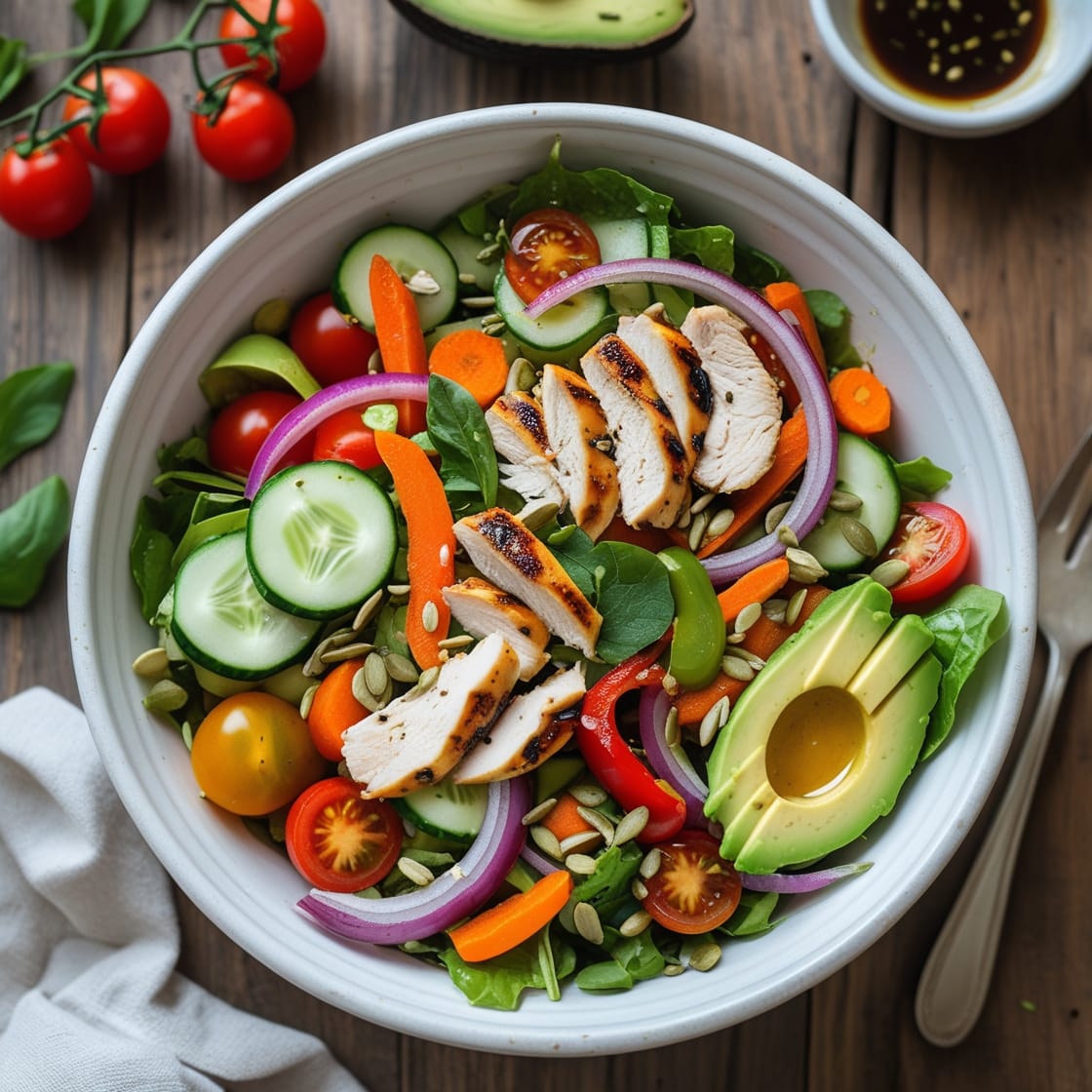
Common Mistakes to Avoid
When preparing low-calorie salad recipes, it’s important to steer clear of a few common pitfalls:
- Overdressing the salad, which can quickly add unnecessary calories and fat.
- Relying too heavily on high-calorie ingredients, like creamy dressings or fried toppings.
- Skimping on the vegetables, as they are the foundation of a nutrient-dense salad.
- Failing to balance the flavors and textures, which can result in a bland or unappetizing dish.
Storing Tips for the Recipe
To maintain the freshness and crispness of your low-calorie salad, follow these storage tips:
- Store the greens and vegetables separately from the dressing in airtight containers in the refrigerator.
- Prepare any proteins, such as grilled chicken or roasted shrimp, in advance and store them individually.
- When ready to serve, simply assemble the salad and dress it just before eating to prevent the greens from becoming soggy.
- Leftover salad can be stored in the refrigerator for up to 3 days, but it’s best to dress it just before serving.
Conclusion
Incorporating more low-calorie salad recipes into your diet is a simple and delicious way to support your health and wellness goals. By combining a variety of fresh, nutrient-dense ingredients and using flavorful dressings, you can create salads that are both satisfying and good for you. Experiment with the recipes and suggestions outlined in this post, and don’t be afraid to put your own spin on them. Enjoy the journey of discovering new and exciting ways to enjoy a healthy, low-calorie lifestyle.
FAQs
Q: Can I make these salad recipes in advance?
A: Yes, you can prepare some of the components in advance, such as chopping the vegetables or cooking the protein. However, it’s best to assemble the salad and add the dressing just before serving to maintain the freshness and crispness of the greens.
Q: Are there any low-calorie dressing options I can use?
A: Absolutely! Opt for vinaigrette-based dressings, such as balsamic or lemon-herb, or try a yogurt-based dressing like tzatziki. These lighter options can add flavor without adding unnecessary calories.
Q: Can I make these salads vegan or vegetarian?
A: Yes, these low-calorie salad recipes can easily be adapted to suit vegan or vegetarian diets. Simply replace the animal-based proteins with plant-based options, such as roasted chickpeas, lentils, or tofu.
Q: How can I add more variety to these salad recipes?
A: Feel free to experiment with different combinations of greens, vegetables, proteins, and add-ins, such as nuts, seeds, or dried fruit. Trying new flavor profiles can help keep your salad routine exciting and prevent boredom.
Your Feedback Helps Us Grow!
There are no reviews yet. Be the first one to write one.

